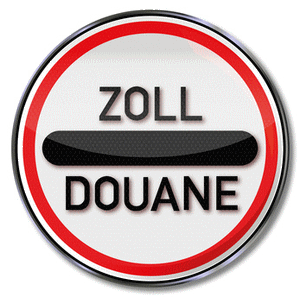

Please note that these comments are described rather abbreviated. There are quite a number of additional documents and forms as well as there are other customs procedures. Additional infomation can be obtained from your local customs (head) office or your chamber of commerce.

Customs Documents
Overview of the most important export documents:
1. Export accompanying document
An electronic export declaration will always be required for a shipment to a third country when the value of the shipment will exceed € 1,000, or if the weight of the goods will amount to more than 1,000 kg. However, it can happen that an export declaration will be needed for a shipment below these value limitations, when the consignment is transported as general cargo by a carrier.
Basically, one has to distinguish between export declarations in single-step procedure and two-step procedure. When the shipment is effected in single-step procedure, the entire operation will be processed at the customs office of exit (at the border / at the seaport / at the airport). This is only possible, if the customs office of exit is within Germany and if the value of the shipment does not exceed the value limitation of € 3,000. Normally, export declarations are handled in the two-step procedure. Here the data of the export declaration is sent to the export customs office in charge, where the export accompanying document (EAD) is produced after checking the data and the goods.
On the right top of the EAD the MRN (movement reference number) and a bar code is imprinted. When the shipment leaves the EEC, the bar code is scanned. This generates the export notice (POD). A POD for a shipment to a third country is needed, since export invoices are issued without VAT.
Exporters that, in the line of their business, need an export accompanying document for their export must have a valid EORI number (Economic Operators’ Registration and Identification number), which means that their data must be stored in a central data bank of the German customs authorities. Generally, private individuals do not need to have an EORI. In Germany the EORI can be applied for at the Generalzolldirektion – Dienstort Dresden (General customs directorate / master data management) by using the form 870 or by using an internet participant application (to be found on the website of the German customs authorities).
→ Show EAD
2. Movement Certificate EUR.1
The movement certificate EUR.1 is a declaration for products having preferential origin status that is needed for shipments to those countries with which the EEC has special agreements. Goods, for which a movement certificate has been issued, can be imported a reduced tariff and sometimes even exempt of duties. The EUR.1 is used for movement of goods to the following countries: Switzerland, Norway, Iceland, Liechtenstein, Serbia, Macedonia, Faroer Islands, Israel, West Bank, Jordan, Lebanon, South Africa, Mexico, Chile, Egypt (to name a few).
Up to a value of 6,000 Euros, the exporter is allowed to give a declaration of preferential origin on the (commercial) invoice used for the shipment of goods to these countries. In case the value is higher than this limit, the EUR.1 has to be used.
The EUR.1 has to be filled in by the exporter (or his representative) and must be produced to the responsible customs office. In order to confirm the origin of the goods, supporting documents such as a supplier’s declaration according to regulation (EEC) No. 1207/2001 need to be presented to the customs officers.
→ Show supplier’s declaration EUR.1
3. Movement Certificate A.TR
The movement certificate A.TR. is used for shipments of goods to Turkey. The certificate can only be issued for goods that are released for free circulation within the EEC, i. e. for goods that have been produced the EEC or goods that have been imported from third countries, for which all import duties have been paid. The goods must be shipped directly form an EEC member country to Turkey (or vice versa).
The basic principle of tax exemption is applied. This means that goods, for which an A.TR. is issued, can be imported exempt of duties. For that reason, the movement certificate A.TR. can be considered as an open market certificate.
4. ATA Carnet
The ATA carnet is an international customs document that permits the tax-free and duty-free temporary export and import of goods for up to one year. The acronym ATA is a combination of French and English terms meaning “Admission Temporaire / Temporary Admission”. The carnet is issued by the Chambers of Commerce and Industry. Before using the Carnet for movements between two countries, the identity of goods must be certified by the local customs office in charge.
The Carnet is used for the temporary use of commodities, such as commercial samples, professional equipment, and goods for use at exhibitions and fairs. The product range is nearly limitless, since Carnets are regularly used for the movement of everything from books or clothing to cars or even yachts.
The most important advantage of the Carnet is the speedy border clearance. The carnet document has two green cover pages denoting country of origin with instructions. Within the covers are counterfoils and vouchers for each country to be visited or transited. The vouchers act as receipts for entry and re-export in foreign countries and are kept by foreign customs authorities.
The eCarnet has to be applied for at the local Chamber of Commerce and Industry (see https://www.e-ata.de). The first step is to register with the Chamber of Commerce and Industry. After that, all data has to be uploaded. The employees of the Chamber of Commerce and Industry will then print the carnet.



